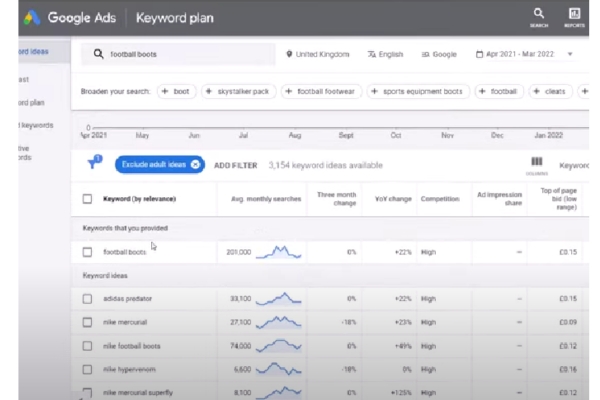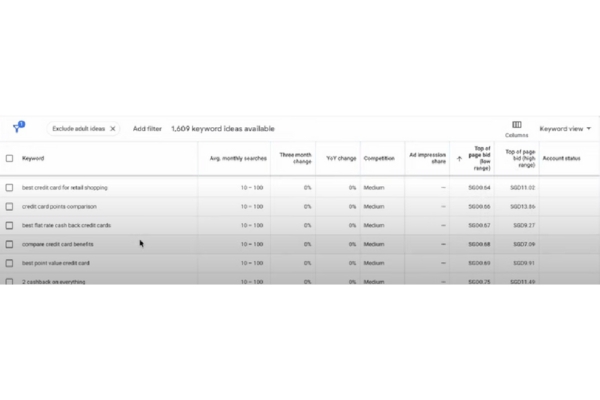If you have a local company and want more people to find you online, Google Keyword planner is one of the best tools to start your keyword search. Imagine you learn the exact words that your customers enter in Google. Regardless of whether you are a hundred in Portland or a yoga studio in Texas, if you use this free tool, your company can appear in the right place at the right time.
Let us break it up without letters – just steps that you can actually follow.
What is Google Keyword planner (and why you should use it)
Google Keyword Planner is a free tool with which you can find keywords that people are looking for on Google. It is designed for advertisers, but even if you do not carry out ads, it is still one of the best free options to discover real search terms.
Instead of guessing whether people are looking for “pet salon” or “dog care services near me”, you can see which further search queries carry out – and target this term.
Advantages for local companies:
- Find what your local audience is actually looking for
- Discover content ideas for blogs, services and FAQs
- Plan your website pages for real data
So you can access Google on Google keyword planner
You need a free Google ad account, but don’t worry – you don’t have to spend anything. Imagine a powerful tool is unlocked without pulling out your wallet.
Here you can find out how to get:
- Go to ads.google.com And either register or create an account.
- When asked to create a campaign, they do not emphasize. Click “Switch to expert mode”– You will usually find it in small text below the main options.
- Select in the next screen “Create an account without a campaign.” This helps you to completely skip the expenditure setup.
- As soon as your account is finished, you end up on the Google ads.
- Click the Crochet bowl -icon (upper right corner) labeled “Tools and settings.”
- Under the planning Section, select “Keyword planner.”
You will now see two options:
- Discover new keywords – best to get ideas
- Get search volume and forecasts – best if you already have a list
We focus on this guide Discover new keywords– The majority of the knowledge begins here.
How to find local keywords

Now the fun begins. You will use the planner to see what real people type in Google – and how often.
Step by step:
- Click “Discover new keywords.”
- Enter 1–3 services or products in the search bar that you offer. Example:
- “Hairdresser salon”
- “Vegan bakery”
- “Pet care”
- Click the Location filter Give directly under the search bar and enter your city, neighborhood or service sector. This is of crucial importance – otherwise the data can reflect global or national search processes.
- Punch “You get results.”
You will see now:
- A long list of keyword suggestions
- Monthly search quantities (areas such as 100–1k)
- Competition level (low, medium, high)

What is to be found:
- Keywords that are relevant to your company
- Low to medium -sized competition For easier ranking
- A mixture of short and long-tail keywords
- Terms that include their urban or service sector
Even if a keyword does not have a large search volume, it can be valuable if it is specific and corresponds to real customer intent.
Select the right keywords for your company
Not all keywords are worth hunting. Here you can find out how you can filter out the noise and concentrate on the gold.
Prioritize these types:
- Keywords with high intentions – to act this willingness to sign, such as “Emergency plumber near me” or “Previous of booking in Portland.”
- Location -based keywords – Always add your city, city or region when you aim at local search queries. Ex: “Texas massage spa.”
- Service + modifier combinations -Thies are descriptive and detailed, such as “affordable catering services” or “environmentally friendly house cleaning”.
Avoid only pursuing the terms with the highest volume. They could be more competitive and less targeted. Go for a remaining amount: wide conditions for traffic, long -tailed conditions for the intention.
How to use these keywords on your website
As soon as you have found the right keywords, it’s time to sprinkle them.naturally– through your website.
Here you will find where you can use them:
- Homepage – Integrate your top keywords into the first paragraphs and headlines.
- Service pages – Create a dedicated page for every core service and optimize for certain keywords. Example: “Lawn mower in Austin.”
- Blog posts -Use questionable or long-tailed keywords for blogs. Example: “How often should I maintain my dog in summer?”
- Meta title and descriptions – These appear in search results. Add your primary keyword and a short benefit to improve the click rate.
First write for humans, search engines. Do not make any keywords – Google is now smarter than that.
Track what works

After optimizing your content, keep an eye on what brings the greatest traffic. You don’t want to “set and forget” it.
Tools for monitoring progress:
- Google search console – indicate which keywords you have classified, how often you appear and how many clicks you get.
- Google Analytics – Tracks, which pages work best, how long users stay and much more.
- (Optional) GHL user – If you use a platform like Gohighlevel For funnel or lead genes, you can connect keywords target pages to your CRM or the persecution of the conversion paths.
These tools offer you real-time insights and help you to double what works-what does not work.
Use your local keyword research into action
Small changes in your keyword strategy can lead to great visual gains – especially for local companies in which the competition is tight and every search. Regardless of whether you are just starting or want to improve your existing website, the key is to stay consistent. You don’t have to master everything overnight.
Only concentrate on understanding what your customers are looking for, use these findings to guide your content and create from there. Over time, these little efforts are stacked. So don’t wait until everything is perfect – just start, learn how to go and let the data run the way.
Frequently asked questions

If you do not carry out active ads, Google Keyword planners only show wide areas – but it is still a great tool to recognize trends and guide their strategy.
Every few months or when starting a new service, promotion or blog theme.
Absolutely. Search for keywords or long-tail phrases and transform them into helpful instructions.
No! You only need a free Google ad account to access the tool. While paid advertisers may see more precise data, the free version is still incredibly useful for content and SEO planning.
Create separate key word lists for each location. Then create location-specific destinations or blog posts with these keywords to increase visibility in every area in which you serve.
Technically speaking, but it is much easier to use on the desktop. The user interface is more user -friendly and you can see more data at a glance.

